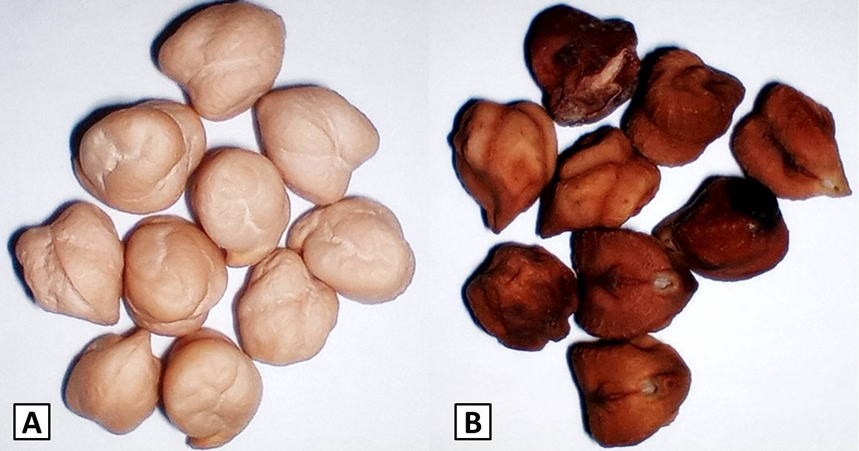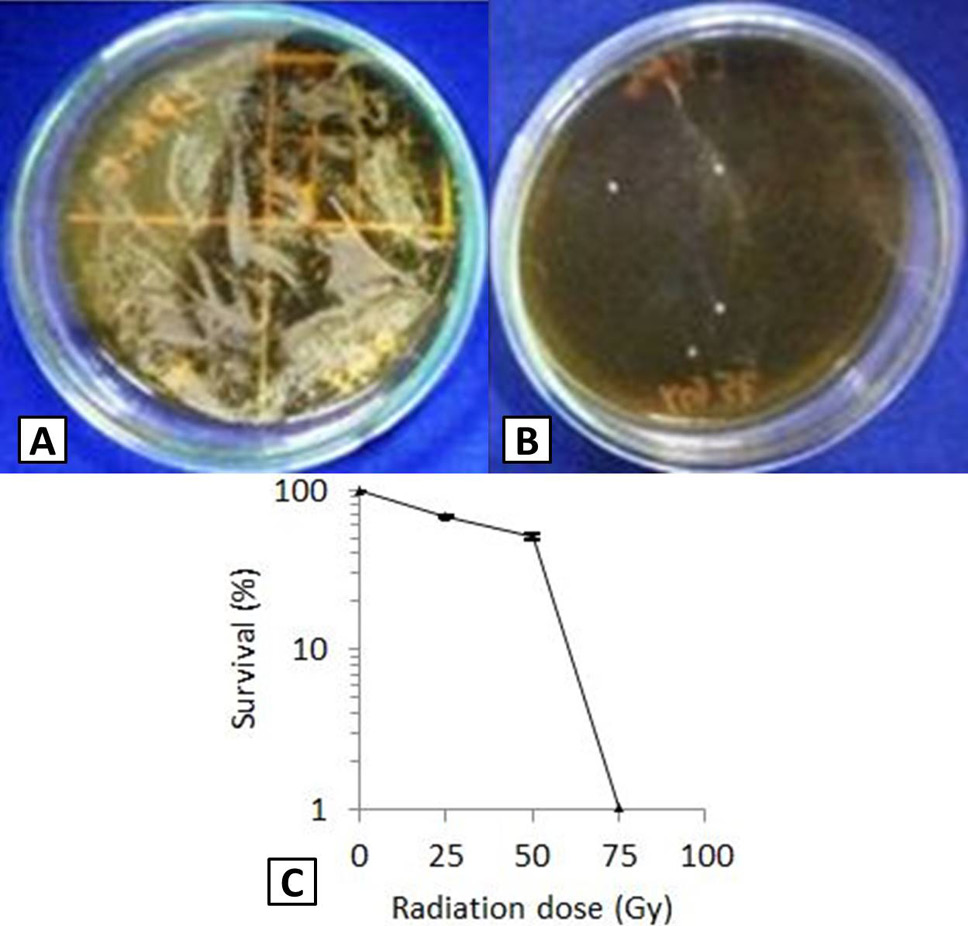Lactic Acid Bacteria and Chickpea (Cicer arietinum L.): An Unexplored but Potentially Beneficial Liaison
Lactic Acid Bacteria and Chickpea (Cicer arietinum L.): An Unexplored but Potentially Beneficial Liaison
Ahmad Nadeem1,2 and Rubina Arshad1,2,*
Visible differences between (A) Kabuli (CM-2008) and (B) desi (Pb-2008) chickpea seeds; Kabuli variety has whitish coloration and smooth surface in contrast to dark and rougher appearance of desi variety.
Antagonistic activity of lactic acid bacteria (LPA1, LPA3, LPA6) against Fusarium solani on PDA: A, F. solani (control); B, LPA1; C, LPA3; D, LPA6.
Effect of gamma radiation exposure given to wild type lactic acid bacteria LPA6 on MRS agar: A, un-irradiated; B, irradiated with 75 Gy; C, Survival percent of LPA6 vs gamma radiation (0-100 Gy) exposure (semi-log). Bacterial cells were exposed to four doses (25, 50, 75, 100 Gy) of gamma rays. Values are survival (%) mean with ±SD.
Effect of LAB inoculum (T1, T2 and T3) on plant height (A), root length (B), number of primary branches per plant (C), number of secondary branches per plant (D), number of pods per plant (E), number of seeds per plant (F), 100-seed weight (g) (G) and plant weight (g) (H) in desi (Pb-2008) and Kabuli (CM-2008) chickpea varieties. Treatments used: T1, LPA6 wild type; T2, MLPA6 mutant; T3, consortium of LPA6 and MLPA6; T4, un-inoculated (control).














